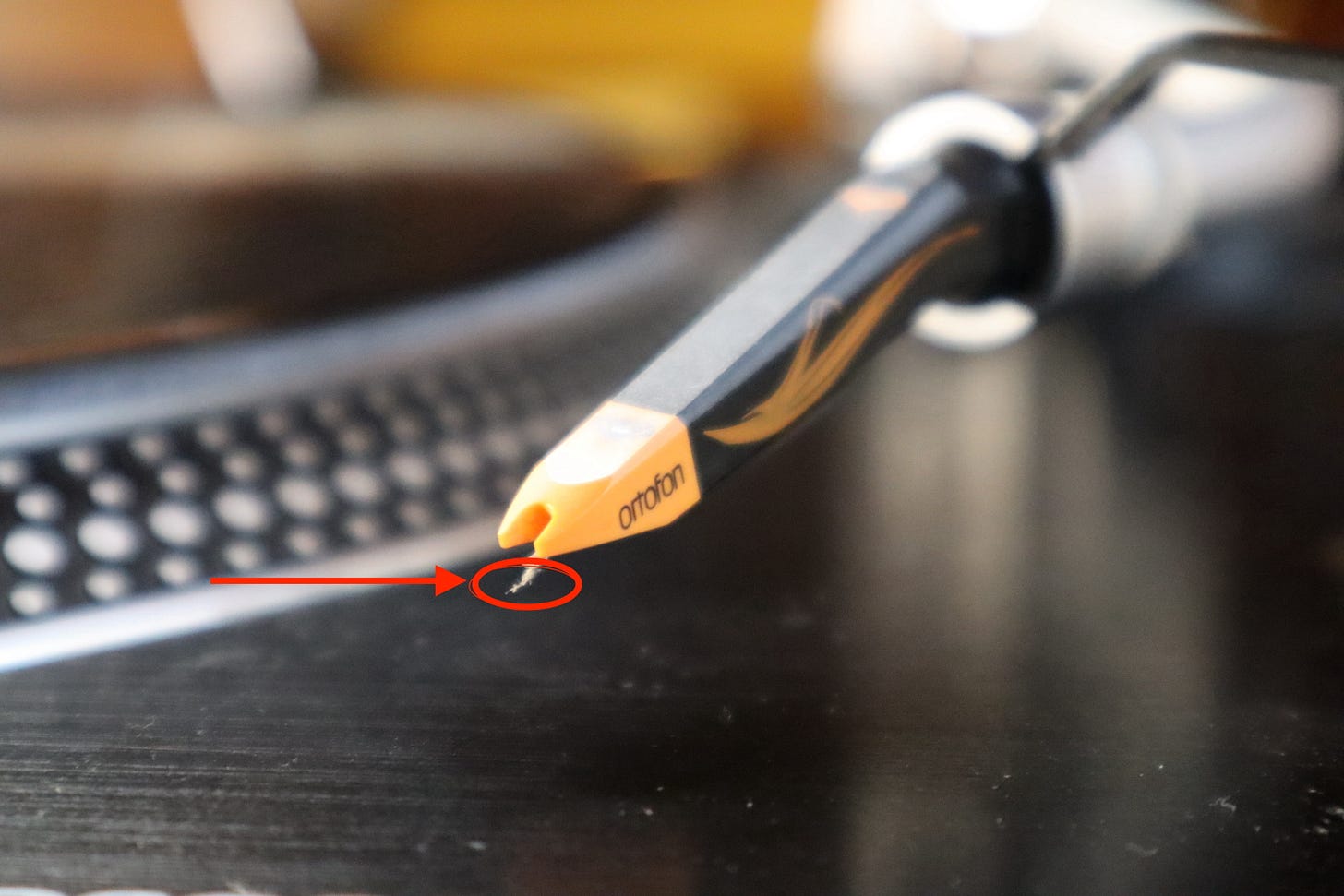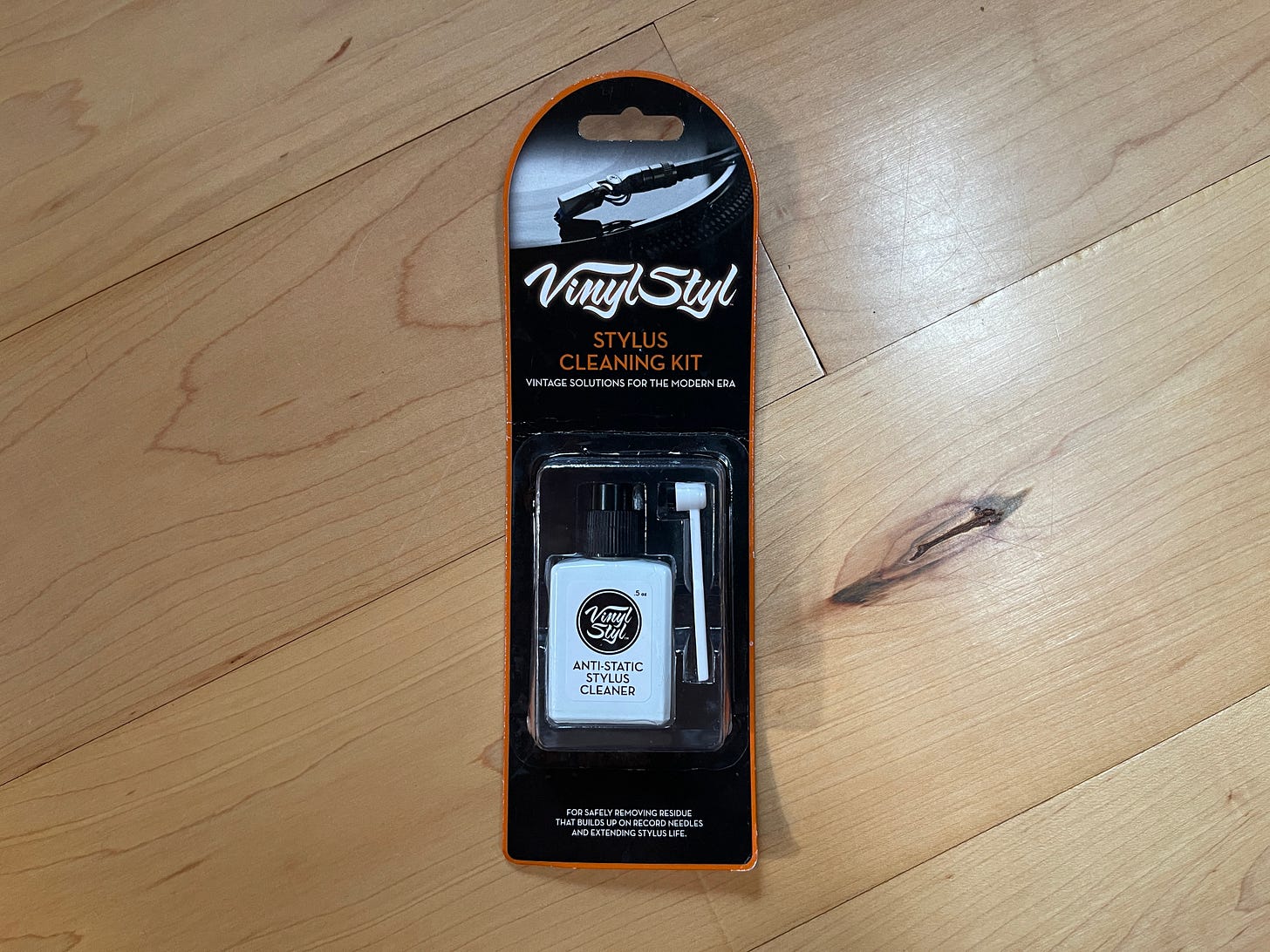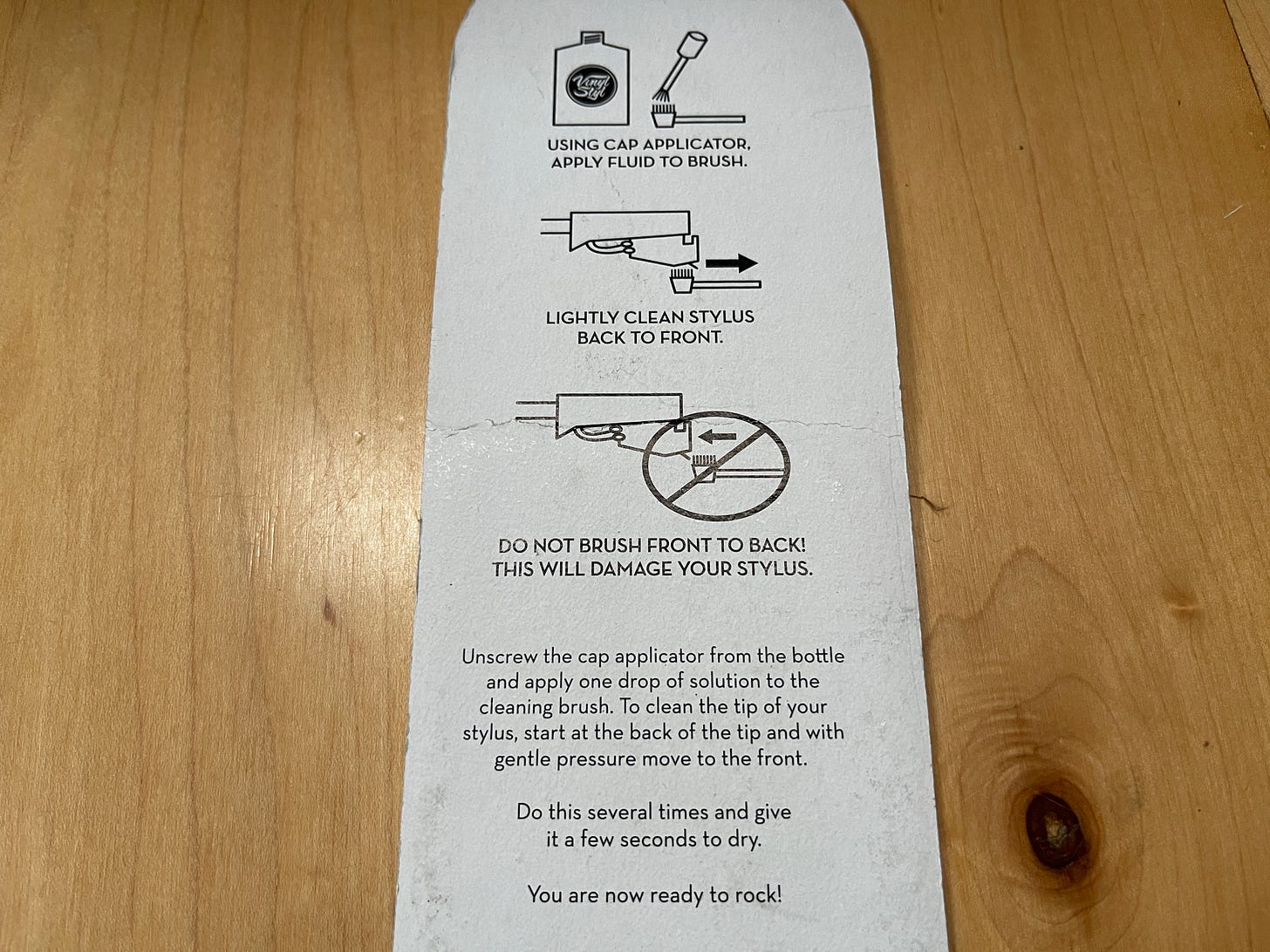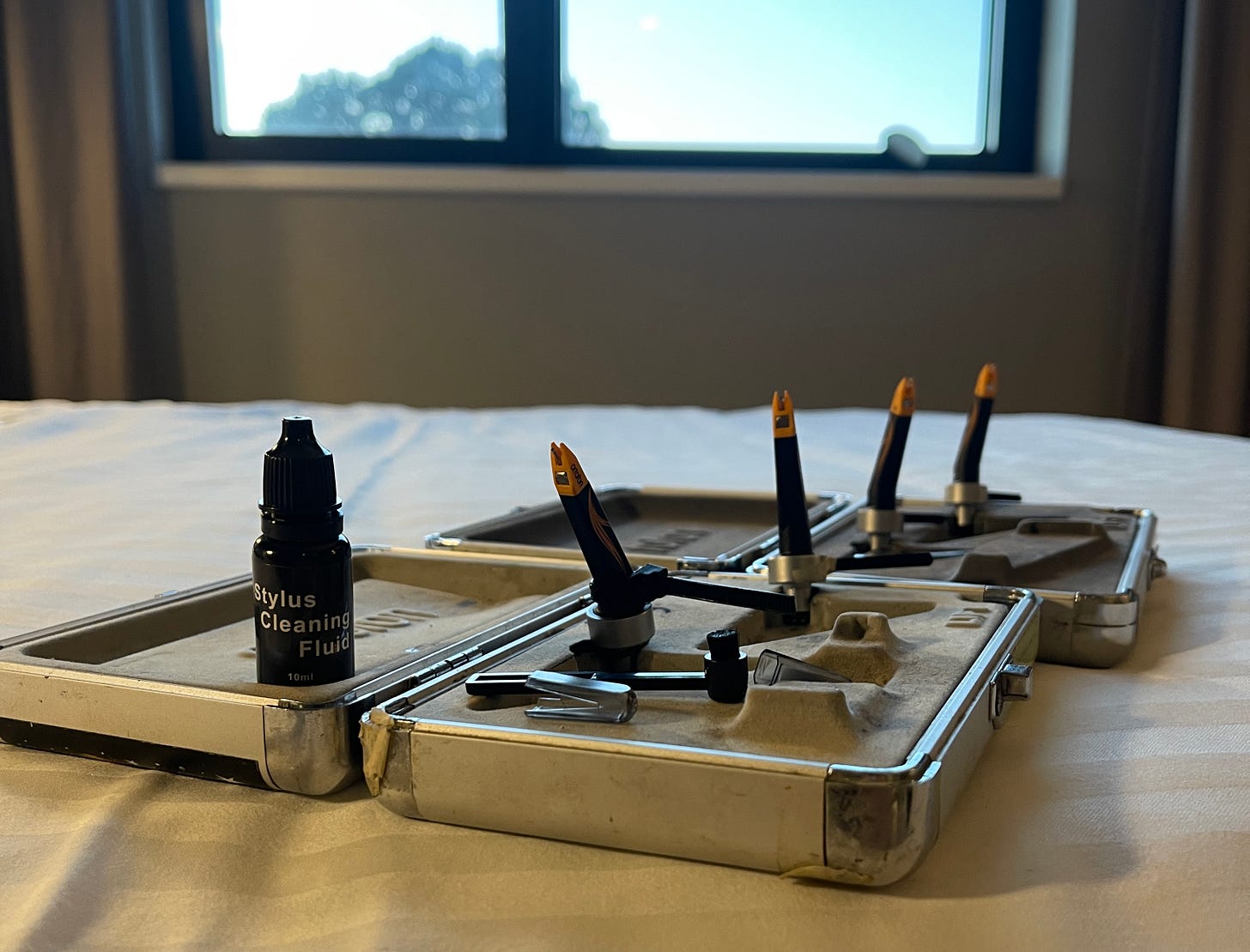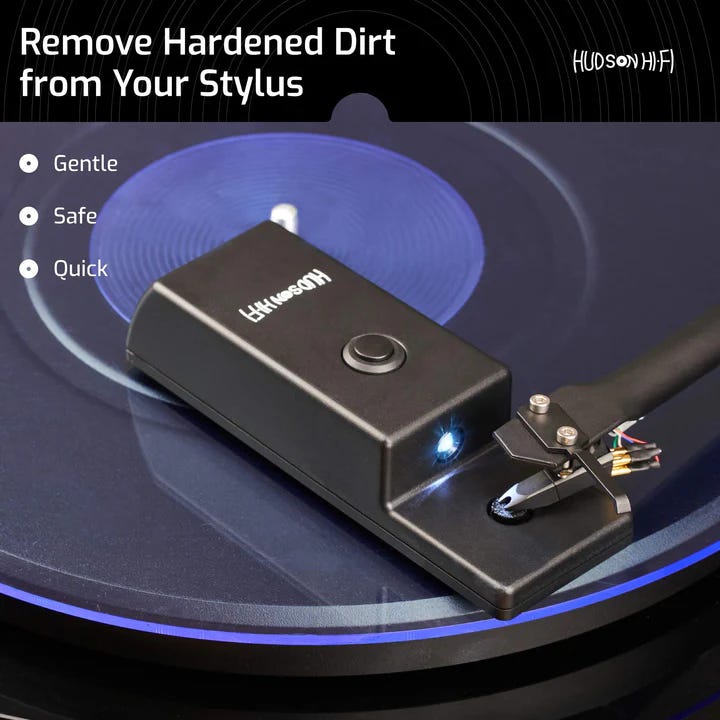There are plenty of resources online about DJing and many of them are excellent, but the vast majority focus on hard skills like the techniques for blending and scratching or track selection. Few of these guides focus on the minutiae of a good vinyl set-up, or monitoring, or touring with your records. We could call this minutia the vinyl DJ’s mise en place. The French term, which loosely translated means “everything in its place,” is used in cooking to describe all the preparation done before the ultimate act — picking the right knives, chopping vegetables, etc. This series will focus on everything I do before I put the needle on the record in front of a hungry dancefloor. As a vinyl DJ with almost three decades of experience, I want to share what I have learned along the way about preparation, much of it through trial-and-error after I started to tour internationally in 2018.
Fine Tip No. 1 is something I wish I had figured out years ago. Until recently whenever I needed to clean my stylus (needle) tip I would gently pull the dust off with my finger or use the standard dry brush that comes with most needle sets. I would think that had properly cleaned the needle. But I kept having the following recurring issue gig-after-gig no matter how often I dry-brushed my needles: during my sets my needles would quickly clog with dust, which caused a degradation of the sound and also lead to skips or the dreaded needle skid. I’ll refer throughout this article to these three problems as “tracking issues”, meaning that the issues are caused by the inability of the needle to “track” the grooves of the record properly. A skid happens when the needle jumps out of the groove and skirts across the top of the vinyl until it reaches the center label creating a crescendo of thunder-like sound and—-if you are lucky—-screams encouraging you to “play on.” The first time it happens people will usually cheer, but needle problems can break the continuity of the set and eventually crush the vibe. My mind races and catastrophizes when I see the needle start to clog; “will the needle make it to the breakdown? ..can I blow on the needle gently to remove the build up?… will it happen on the next record too?”
[The sound of a skid aka a “needle hop”, which can be caused by a clogged needle, damaged needle, or a poorly calibrated tone arm.]
Nowadays, I clean my records with a special vacuum cleaning device at home before tour and I keep cleaning supplies with me when I am on the road (more on that in a future article), so I always blamed these needle dirt clogs on airborne particles from fog machines, cigs or dust in the air accumulated during the event. After gigs with a lot of fog in the air, I would dry-brush my needles and clean my records carefully, but this wasn’t enough. I felt hexed. Even if I cleaned the needle with my fingers or a dry brush—-and even if the next gig had cleaner air—my clean records would still have the tracking issues identified above (e.g., skids, skips, distortion). Relatively recently I figured out what was happening.
The problem was simple, my dry cleaning technique for my needles wasn’t removing the fog residue because that residue is very very sticky. Fog machines are supplied with a viscous liquid, which the machines then vaporize into small moisture particles, creating the fog effect. Upon coming into contact with the liquid residue, the needle starts attracting airborne particles from both the air and the record, even if this attraction isn't immediately noticeable.
To clean off the fog juice I now use a liquid cleaner to properly and completely remove it. Removing the invisible sticky residue has been a game-changer.
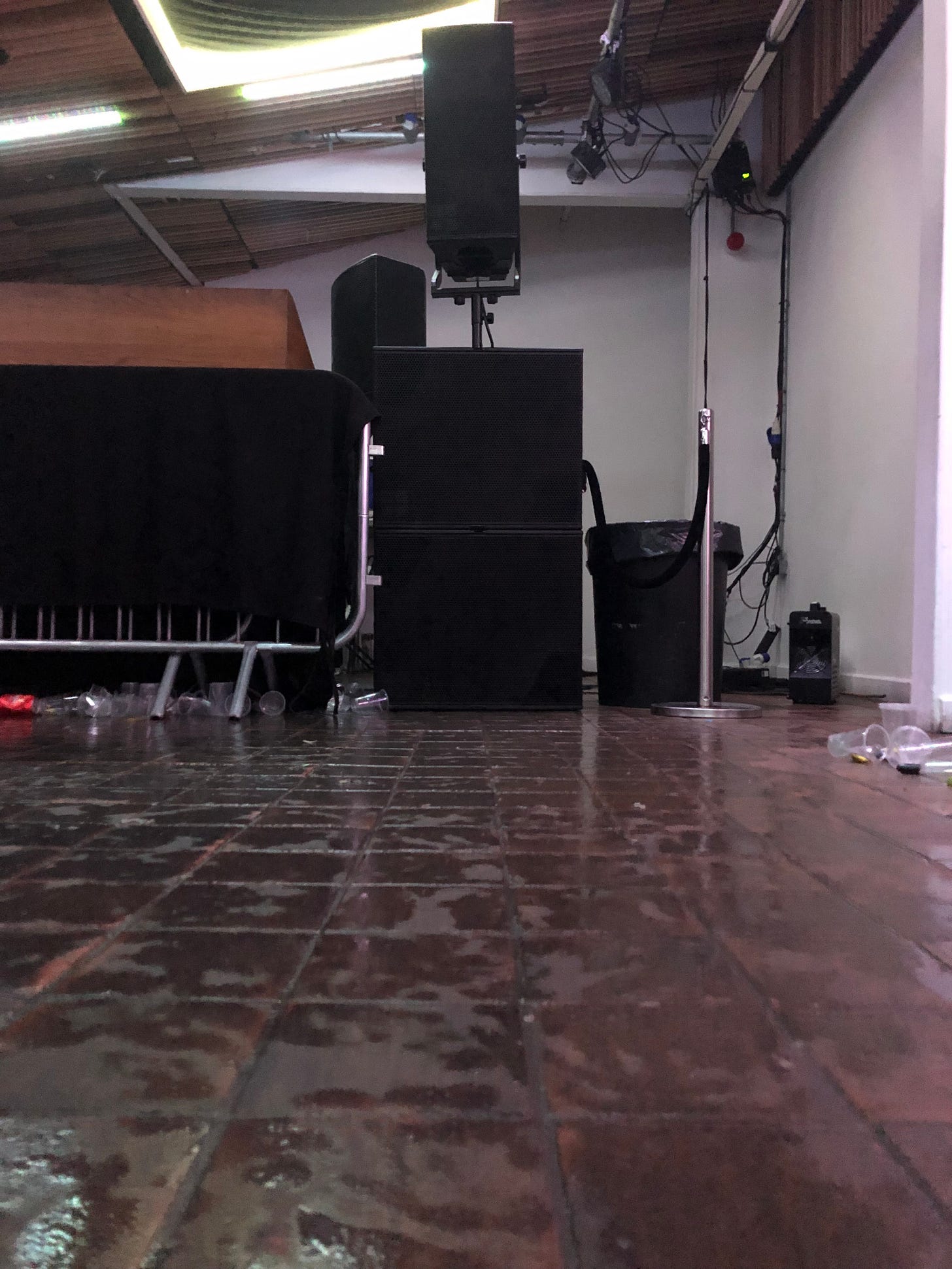
In addition to fog juice, sweat and moisture, the stylus frequently accumulates a static charge, which exacerbates the clogging situation because a static charge functions like a magnet for dust. Here is a little science for those interested: Airborne dust is inherently drawn to surfaces with electrical charges, thus the static charge on your needles effectively turns them into dust magnets. Materials rubbing against each other during circular motion can generate static charges due to friction. This is known as the triboelectric effect, where electrons are transferred between surfaces, resulting in static electricity buildup. As the record spins beneath the needle, it generates an electrical charge, resulting in an imbalance of negative and positive charges. The result is that the sticky goo on your needle becomes extra attractive for particles in the air.
To remove the static charge while you also clean the gunk off a needle you’ll need a proper stylus cleaner with anti-static properties. If you want to keep things simple, just buy a little liquid cleaner and brush set. You’ll want to find a cleaner with anti-static properties. If the liquid is “anti-static” that attribute of the cleaner will be mentioned on the face of the packaging as a selling point.
Be sure to clean each stylus between gigs and give them time to dry before putting them back in the case. The correct direction for the swipe is to move the brush from the back of the needle to the front with a gentle even motion. A few swipes will do it.
[Octo Octa demonstrating the direction of the brush strokes as we get ready to head to CDMX.]
I carry with me four cartridges and at least six needles—four needles mounted on cartridges and two spares. This is helpful because if the air is particularly nasty at a gig I can swap out my needles mid-set without a lot of fuss and fumble. Sweaty hands are not the best tools to remove a needle (stylus) and remount a replacement on a cartridge during a set. Also, time is of the essence when playing records, so the faster you can mount your replacement cartridge the better off you’ll be.
Related advice: After mounting the replacement cartridge be sure to check that both the left and right channels are connected and sending a signal to your mixer. Do this by listening in your headphone cue through both the left and right headphones before you start mixing. Because the little mounting connectors on the tone arm sometimes don’t fully connect on the first try, you can have a situation where only one channel is connected and you might not notice if you normally cue with just one ear in the headphone until it is too late. (e.g. you cue with your left ear and the right channel isn’t sending signal). It is bummer to fix one problem and cause another and naturally you don’t want to discover a mounting issue during or after a blend. Dancefloors don’t respond well to only one half of the speaker system producing a signal.
If you can afford it, I don’t recommend using the needles supplied to you by a club, rave crew or festival. You can’t tell from looking how old they are or whether they have ever been cleaned. You also can’t always tell whether they are damaged/bent. Even if you soundcheck sometimes a needle issue isn’t immediately obvious until you get through a few blends.
During a set I don’t recommend using cleaning liquid on a mounted needle because the needle needs a few minutes to dry before you use it again. I always keep a dry brush on hand for cleaning during sets. Be sure to cap your needles after sets to keep them safe and clean for transport and mounting.
There are some other options for stylus cleaning that don’t involve a brush/liquid combo, but I honestly like the simplicity and cost effectiveness of using the tried-and-true method of cleaning with a brush with liquid cleaner. The other solutions fall into roughly two categories:
Dry “eyeshadow-style” ultra-soft gelatinous plastic/silicone cleaners which don’t require liquid. I am not sure if these gels have anti-static properties and I find placing my needles onto them kind of awkward, but many audiophiles swear by them.
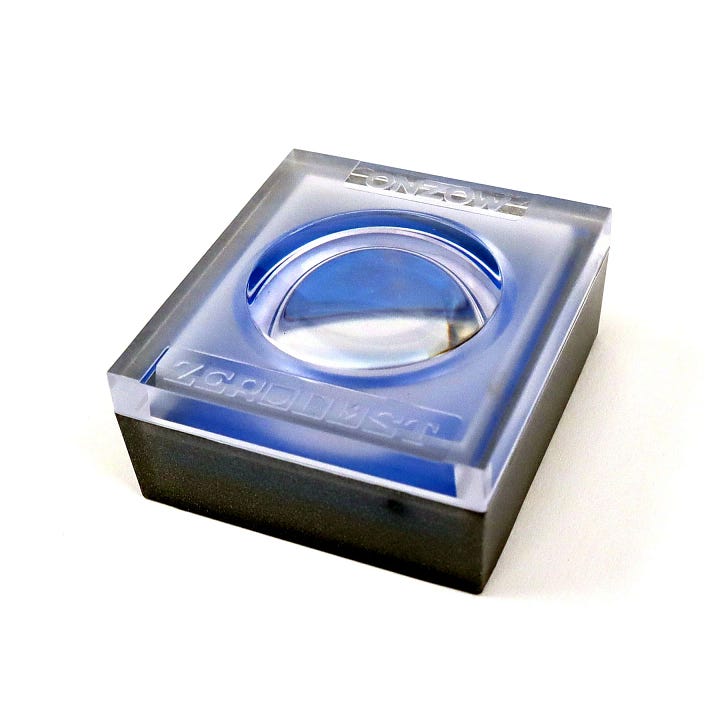
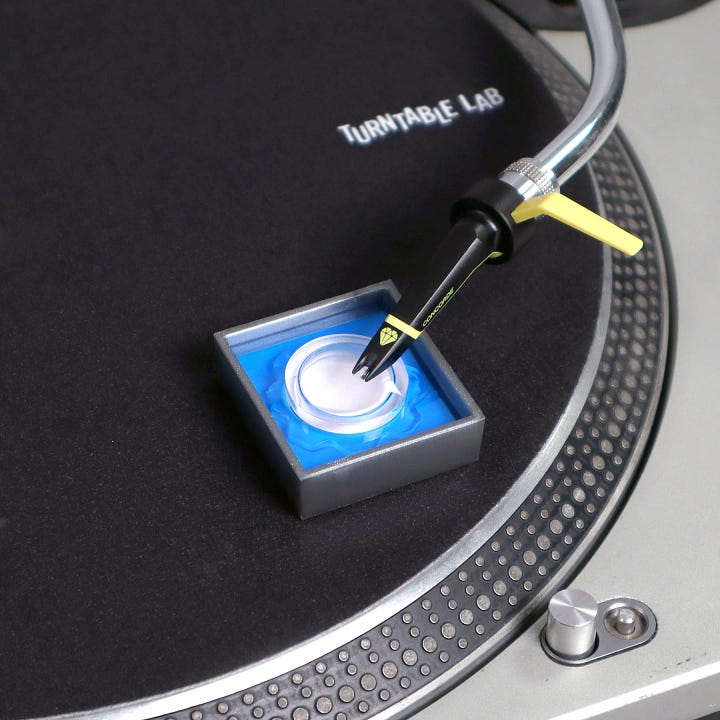
UV “Ultra-Sonic” stylus cleaners that boast residue-free cleaning and use vibration to remove all dirt particles. I haven’t tried these and have no idea if they remove static.
Whatever you decide to use on your needles, I encourage you to consider adding a stylus cleaning protocol to your pre-gig checklist. My partner Octo Octa and I are always delighted when we play a set without any skips, distorted records, or skids. And everyone else is happy too. It is important to say that the occasional skip or skid is just part of playing records and a kind dance floor will keep the vibe positive when it happens (or even get excited at the raw physicality of a skid!), but you want to keep this sort of thing under control so you don’t ever feel a set is ruined. We have enough as vinyl players to be worried about!
For further “fine tips” on record cleaning and removing static from your vinyl records, stay tuned for future installments of this column. Be sure to note that a needle skids and hops can also be caused by damaged needles or poorly calibrated tone arms, so if you are having tracking issues but your needles are free of gunk, you probably need to balance your tone arm, adjust your anti-skate wheel, or replace your needle.
If you have questions, corrections or other comments feel free to write me at journalofmotherbeat@gmail.com.
- Eris Drew




